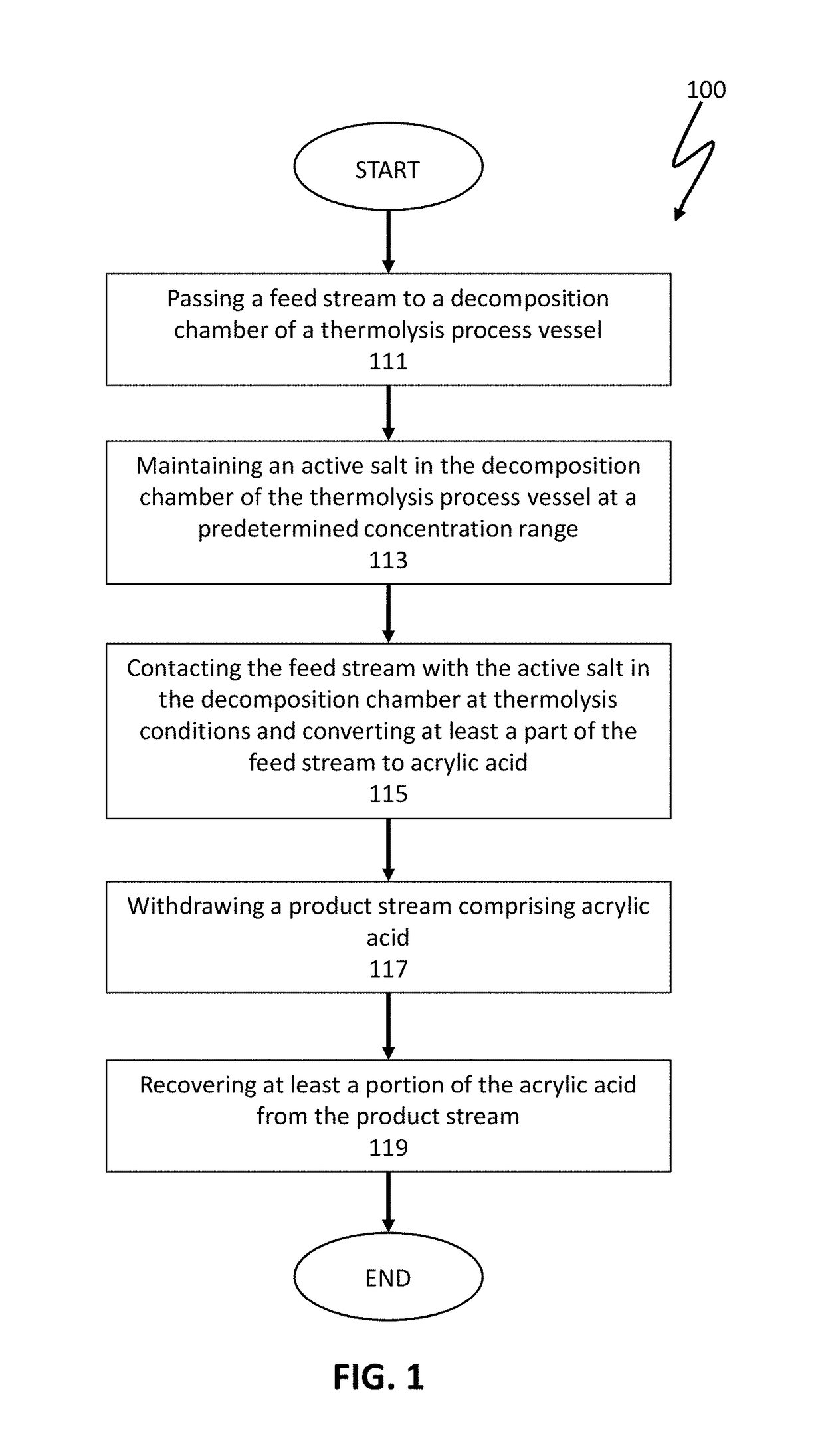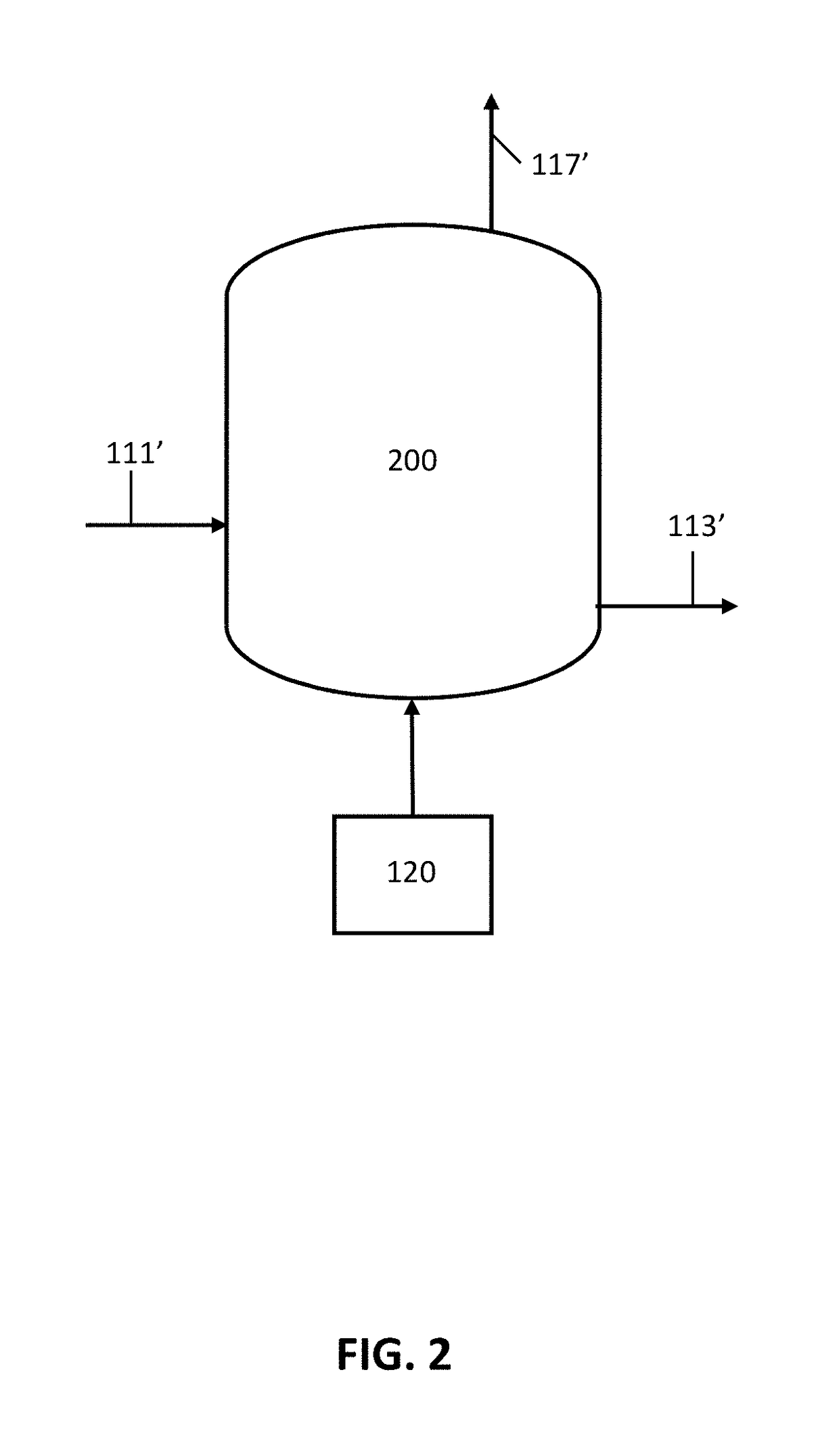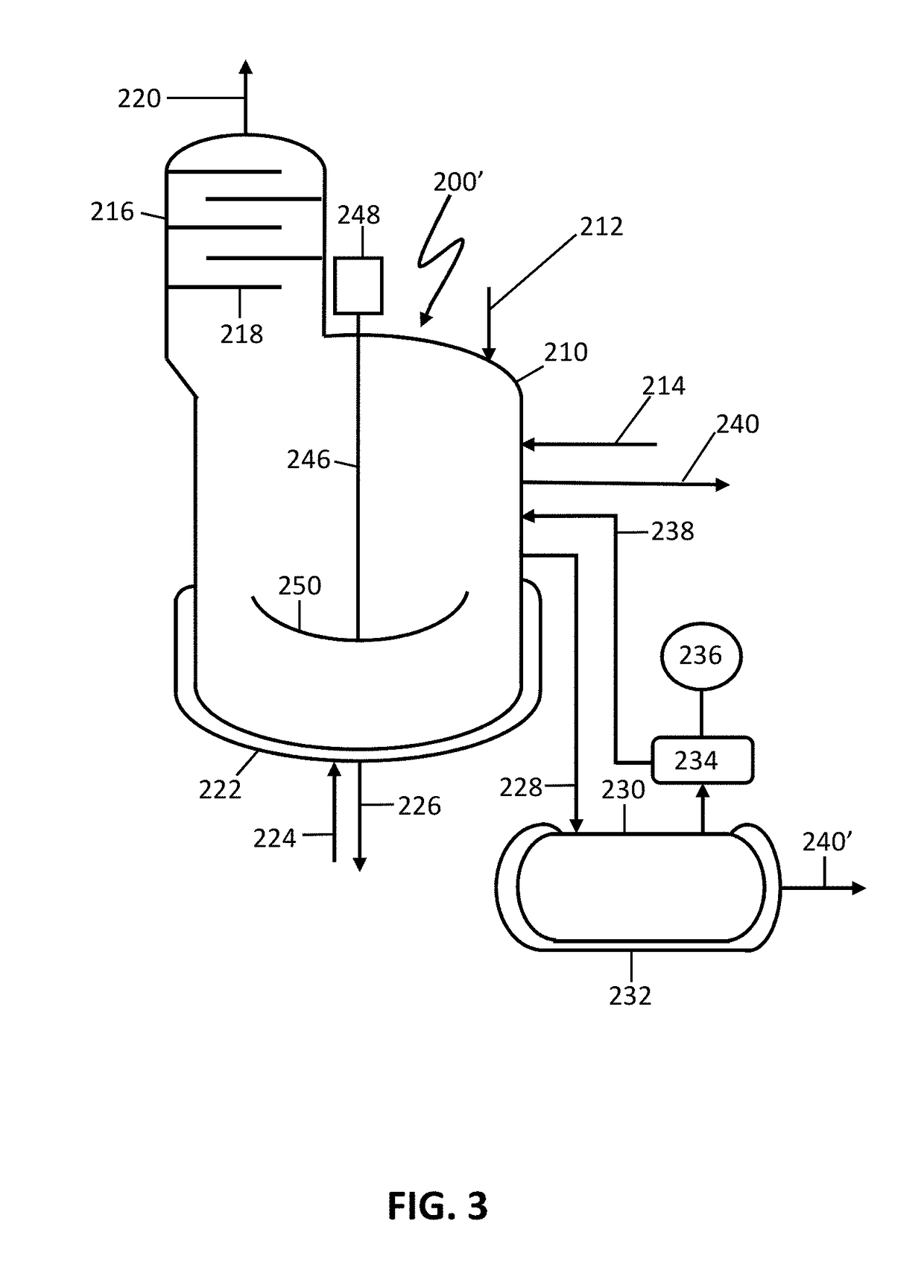Thermolysis of polypropiolactone to produce acrylic acid
- Summary
- Abstract
- Description
- Claims
- Application Information
AI Technical Summary
Benefits of technology
Problems solved by technology
Method used
Image
Examples
Embodiment Construction
[0025]The present invention is directed to apparatus and processes for producing higher purity acrylic acid by catalyzing thermolysis of PPL with an active salt. In certain preferred embodiments of the present invention, the active salt employed for catalyzing thermolysis may be a polymerization catalyst, such as sodium acrylate, used in a polymerization reaction for forming PPL from bPL.
[0026]FIG. 1 illustrates a preferred embodiment of a process 100 for producing high purity acrylic acid. In the FIG. 1 illustrated embodiment, the process 100 comprises steps for passing a feed stream to a decomposition chamber of a thermolysis process vessel 111; maintaining an active salt in the decomposition chamber of the thermolysis process vessel at a predetermined concentration range 113; contacting the feed stream with the active salt in the decomposition chamber at thermolysis conditions an converting at least a part of the feed stream to acrylic acid 115; withdrawing a product stream compr...
PUM
| Property | Measurement | Unit |
|---|---|---|
| Temperature | aaaaa | aaaaa |
| Temperature | aaaaa | aaaaa |
| Fraction | aaaaa | aaaaa |
Abstract
Description
Claims
Application Information
 Login to View More
Login to View More - R&D
- Intellectual Property
- Life Sciences
- Materials
- Tech Scout
- Unparalleled Data Quality
- Higher Quality Content
- 60% Fewer Hallucinations
Browse by: Latest US Patents, China's latest patents, Technical Efficacy Thesaurus, Application Domain, Technology Topic, Popular Technical Reports.
© 2025 PatSnap. All rights reserved.Legal|Privacy policy|Modern Slavery Act Transparency Statement|Sitemap|About US| Contact US: help@patsnap.com



